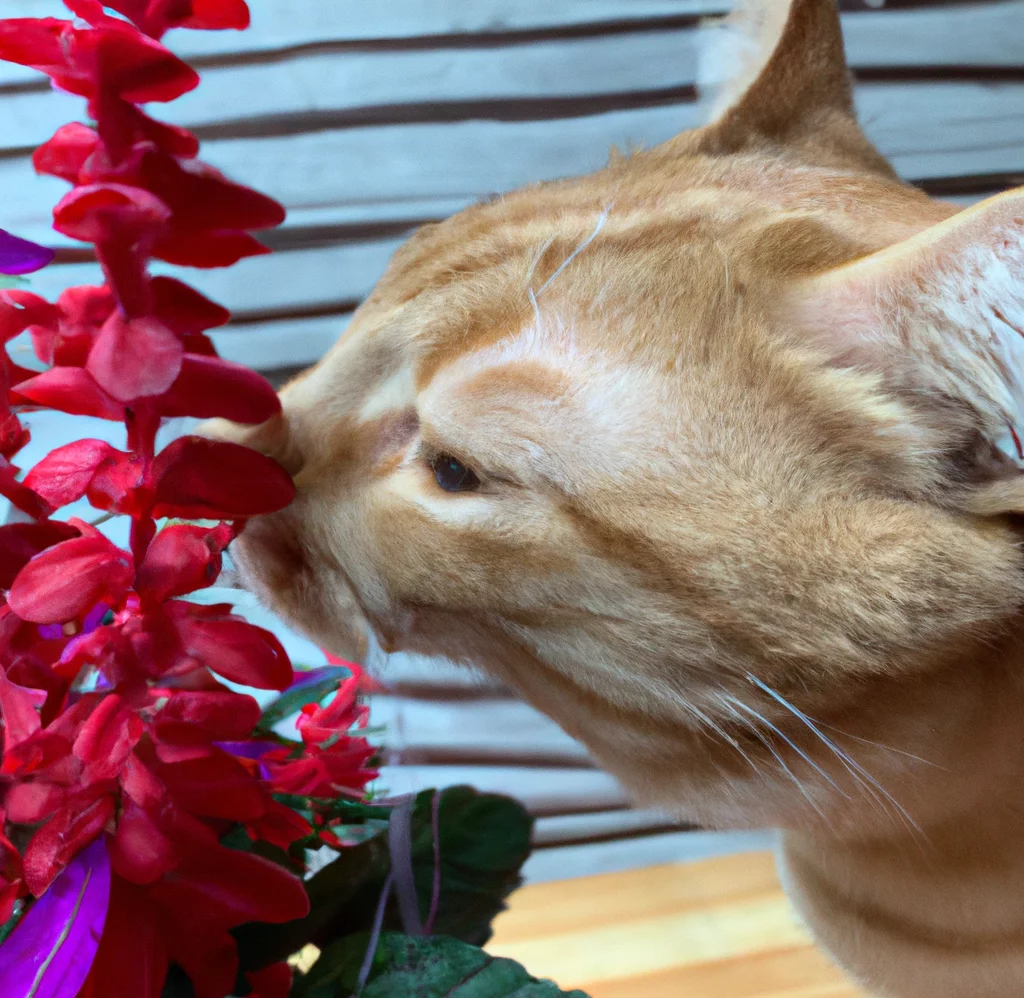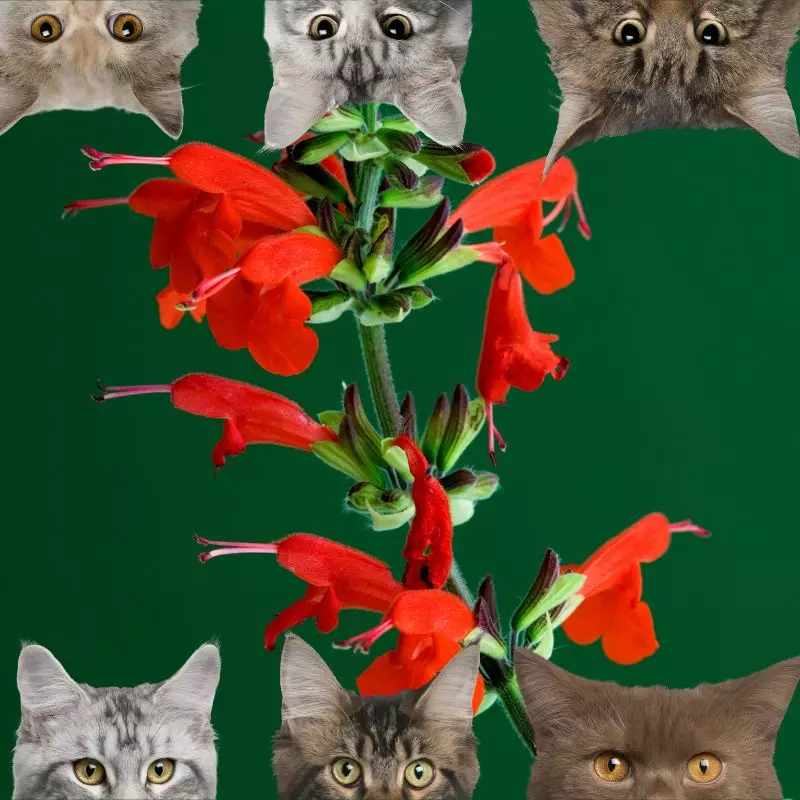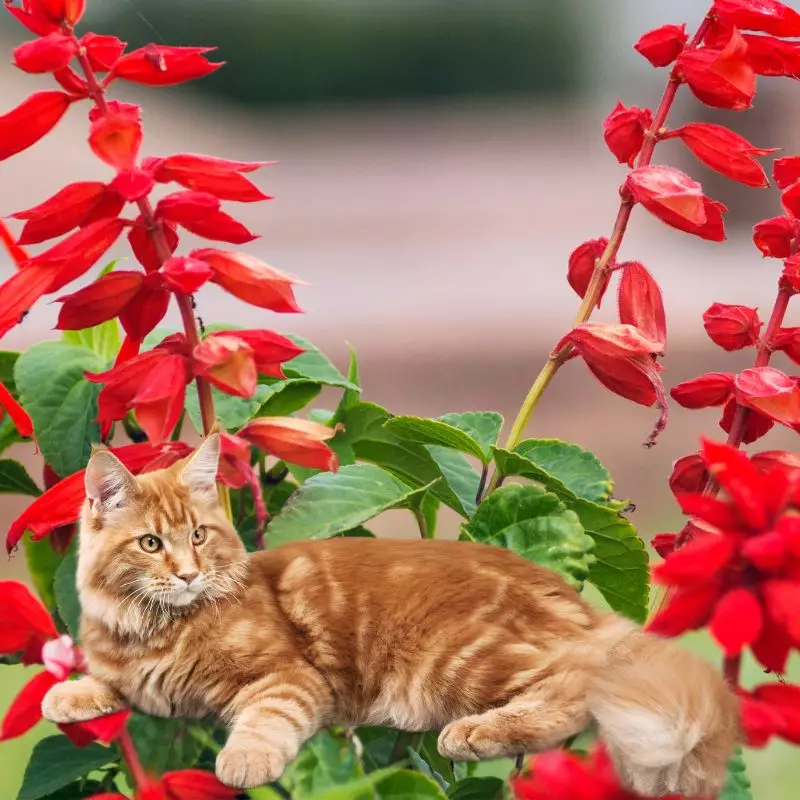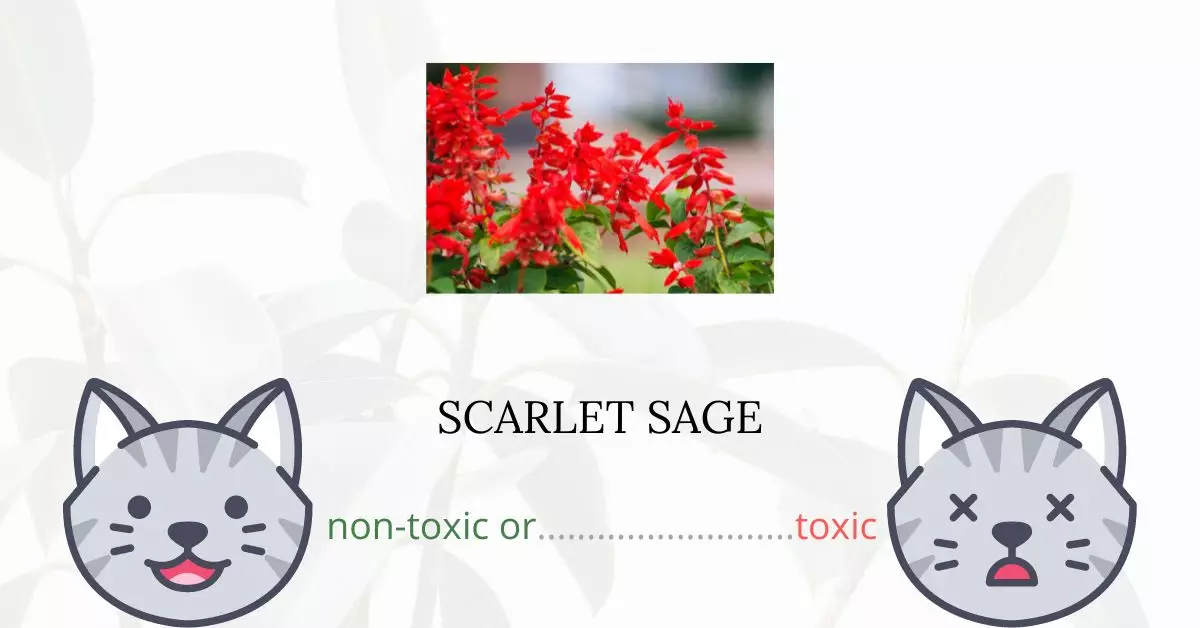Scarlet sage, also known as Texas sage, is not toxic for cats. Our feline friends can safely coexist with this perennial plant, as it lacks hazardous elements that could harm them.
This article has been crafted in collaboration with a team of experienced DVMs (doctors of veterinary medicine) who bring in-depth knowledge about various plants and their effects on pets. In our research, high-authority sources such as the ASPCA (American Society for the Prevention of Cruelty to Animals) and PetMD were consulted, both of which affirm the non-toxic nature of scarlet sage for cats.
If you’re a cat owner and a gardening enthusiast, cultivating non-toxic plants like scarlet sage is a prudent step towards ensuring the safety of your beloved pets.
Can Cats Eat Scarlet Sage or Texas Sage?

Even if your cats consume a small amount of scarlet sage, they won’t suffer severe negative effects. Instead, you should be on the lookout once your cats consumed a significant amount of scarlet sage.
Too much eating of plants may cause felines to have an upset stomach and other GI issues. They should only eat protein-based meals as they are carnivorous animals. Plants are not suitable to be included in their diet because their bodies are not ready to digest these materials.
If your cats are suffering from an upset stomach or indigestion, they may manifest signs of diarrhea, vomiting, and abdominal pain. Do not fret because these signs will subside once the plant materials are out of your cats’ bodies.
What is Scarlet Sage or Texas Sage?

Scarlet sage is a Lamiaceae family perennial herb that is commonly found in the Southeastern United States. It is also prevalent in the Caribbean, Central America, and parts of South America.
This plant grows to a height of two to four feet, with different branches and a spread of about 2.5 feet. Scarlet sage’s pea-green, hairy leaves have scalloped edges and differ in size from one to three inches long and two inches wide.
Scarlet sage flowers come in a wide range of sizes and colors. The naturalized variety is typically 1.25 inches long, bright red, and tubular.
Around the world, it is grown in both private gardens and urban green spaces. It blooms for a long time, from the beginning of summer to the end of autumn.
Keeping Cats Away From Scarlet Sage or Texas Sage

Offering your cats their own plants may seem unusual, but doing so will prevent them from consuming yours. Cats will occasionally consume grass to obtain fiber. It may help them to bring up undigested furballs or also aid in their overall digestion.
Most pet supply stores sell pre-mixed seed packets referred to as “cat grass” or “pet grass.” Your cat has a healthy alternative if you keep cat grass or catnip away from your houseplants. But, remember that cats should still take these grasses moderately.
Training your kitties is the most efficient method of preventing them from eating your plants. It can be difficult, but it is a long-term solution. You’ll be relieved once your feline companions learn not to touch your houseplants, and your plants will also thank you.
Plants to Avoid For Your Cats
If you are a cat owner and unsure if the plants growing in your yard are harmful to your cats, check out this list of toxic plants for cats. You can also check our list of non-toxic plants for cats.





